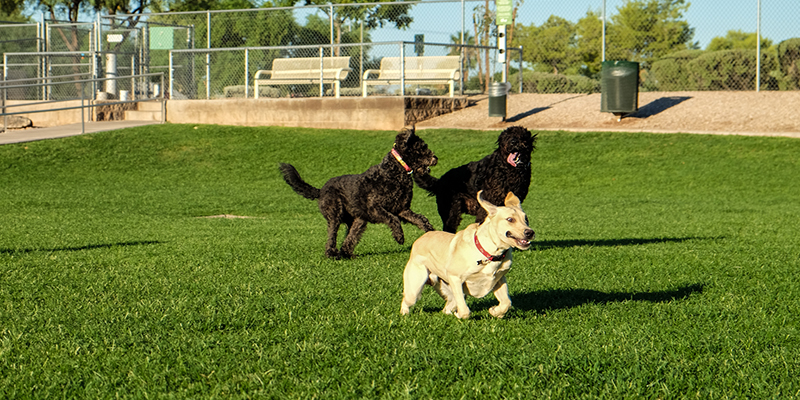Delightful guide for Parents: Choosing the Best Parks for your Furry Friends
Hey there, wonderful parents and awesome pet owners! Finding the perfect park for your little ones and their furry friends? You’ve come to the correct place. This guide will help choose the right parks for dog treks. So, pull up a chair, make yourself comfortable and embarks on this valuable journey with us.
The Importance of Parks for Dogs
Why should you care?
First thing’s first. Before we get into the nitty-gritty of park selection, let’s address why you should consider taking your dog to the park. It might seem like an extra task on your never-ending parent to-do list, but trust us, there are significant benefits.
1. Exercise: Dogs, just like kids, need exercise. A quick game of fetch or a leisurely stroll in the park can make a huge difference to their health and happiness.
2. Socialization: Parks provide a fantastic opportunity for your pooch to encounter different breeds, leading to well-rounded, socially adept dogs.
3. Devoted Bonding Time: Just like you enjoy spending time with your children at the park, dogs also relish spending some quality time with their favorite human – you!
Things to Look for in a Dog Park
Not all parks are created equal
Once you recognize the importance of dogs using parks, you might be tempted to take your dog to the nearest park. But not so fast! There are unique considerations when choosing a park specifically for your four-legged pal.
Safety Measures
The paramount concern for any parent or pet owner is safety. Ensure the park has a secure, well-maintained fencing, a double-gated entry, separately enclosed spaces for large and small dogs, and clean, well-stocked waste stations.
Amenities
A good dog park can also provide amenities such as drinking water for dogs, shady areas for rest, and even agility equipment for adventurous dogs.
Rules and Regulations
Understand the park’s rules and regulations. A well-managed park will clearly state its rules, including leash requirements, vaccine regulations, and owner responsibilities.
Cheers to a fabulous parent like you for ensuring your pup’s physical and social needs are well taken care of! Stay tuned for more in-depth details about the parks as we dive into specific options and tips in the next section!

Most Dog-Friendly Parks: Top Recommendations
The cream of the crop
We’ve done some tail-waggingly good research to recommend the best dog-friendly parks. Here are some splendid suggestions your furry friend will undoubtedly approve of:
Pilgrim Bark Park, Provincetown, Massachusetts
This park features an acre of run-around room, separate spaces for small and large dogs, doggy water fountains, and tons of art installations sure to amuse both kids and adults.
Millie Bush Dog Park, Houston, Texas
One of the best-rated dog parks in the country, it provides plenty of space for sprinters, a pond for swimmers, and shaded areas for those hot Texas days.
Point Isabel, Richmond, California
Offering panoramic views of the bay, this park is heaven for dogs and their owners with 23 beachside acres for off-leash play.
Tips for your Dog’s First Park Visit
Steps to success
Your dog’s first visit to a park can be just as exciting as it can be nerve-wracking. But with our handy tips, you won’t have a bone to pick with the experience:
1. Visit during off-peak hours: Your dog can explore the new environment comfortably without the overwhelming crowd.
2. Keep your dog leashed, to start with: Give them time to acclimate before setting them free.
3. Bring treats and toys: To help keep their attention on you in a new, stimulating environment.
Conclusion
Bringing your dog to a park isn’t just about letting them run wild; it’s about enhancing their socialization, and providing them with mental and physical stimulation. We hope this guide helps you choose the right park for your pup. So, leash up, go out, and have some tail-wagging fun at the park! Remember, there’s a whole world out there for your dog to sniff out. Happy dog walking!
Preparing for a Day at Dog Parks: Top 5 Tips for Parents
Preparing for a day out at a dog park is exciting! It’s a chance for your furry friends to socialize, exercise, and release energy. This guide lists five essential things parents must know to ensure a fun and safe day in parks for dogs.
1. Know Your Dog’s Temperament
Before heading to a dog park, understand your dog’s temperament. Ensure they can interact comfortably with other dogs without showing signs of aggression or extreme fear. If your dog is not comfortable around other dogs, a dog park may not be the ideal environment for them.
2. Vaccinations and Health Checks
It’s crucial for your dog to be up-to-date with their vaccinations before visiting a dog park. This helps protect your dog, as well as other dogs, from potential diseases. Furthermore, ensure your dog is free of fleas and ticks to prevent their spread in the park.
3. Training and Control
Try to train your dog to obey basic commands like “sit,” “stay” and “come” before going to a dog park. This level of control will help keep your dog and others safe, especially when it’s time to leave the park.
4. Pack Essentials
Remember to bring water, a bowl, doggy poop bags and a leash. If allowed, bringing toys or balls can also be a good distraction for your dog.
5. Supervision is Vital
Never leave your dog unattended in a dog park. Even the most well-behaved dogs can find themselves in difficult situations. Stay vigilant and monitor your dog at all times to ensure their safety and enjoyment.
Dog parks are excellent spaces for socialization and fun. Keep these tips in mind when preparing for your day out, and you’ll be sure to have a tail-waggingly good time in parks for dogs!
For more great articles please see here. For more information see here
Disclaimer
The articles available via our website provide general information only and we strongly urge readers to exercise caution and conduct their own thorough research and fact-checking. The information presented should not be taken as absolute truth, and, to the maximum extent permitted by law, we will not be held liable for any inaccuracies or errors in the content. It is essential for individuals to independently verify and validate the information before making any decisions or taking any actions based on the articles.




